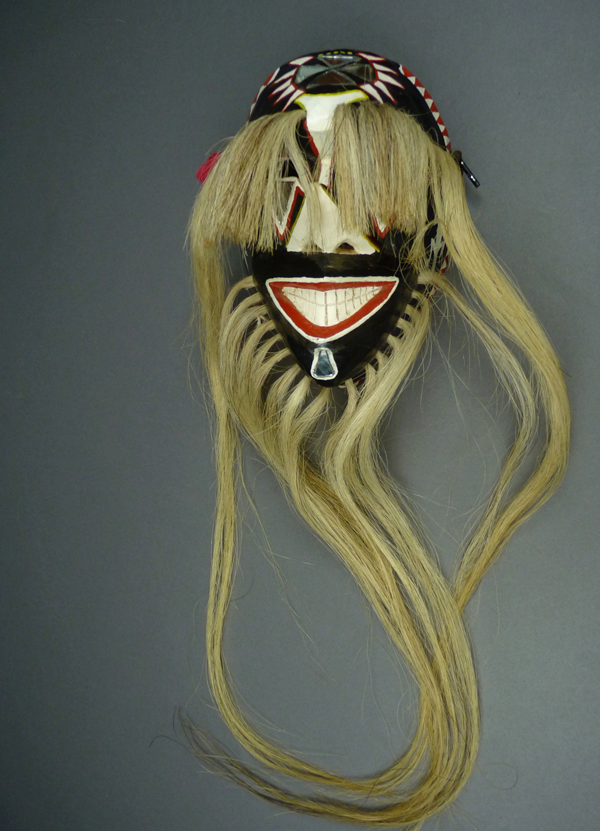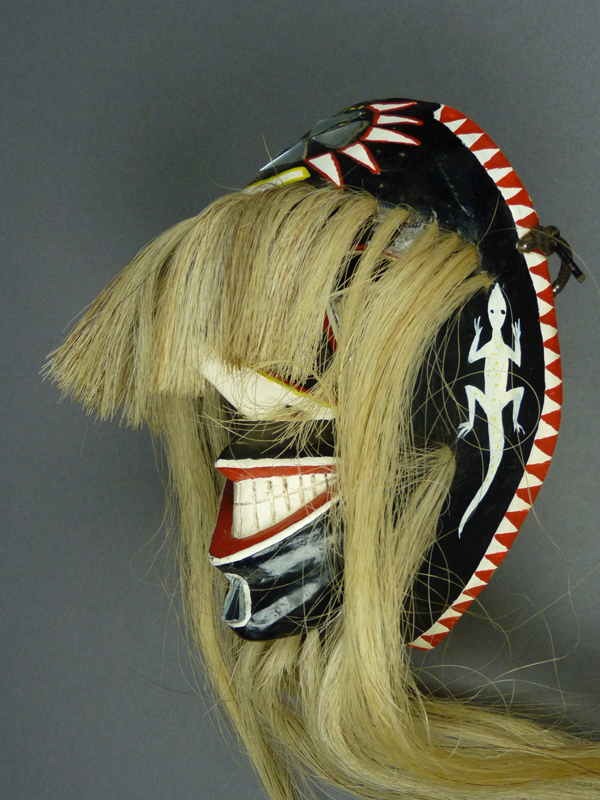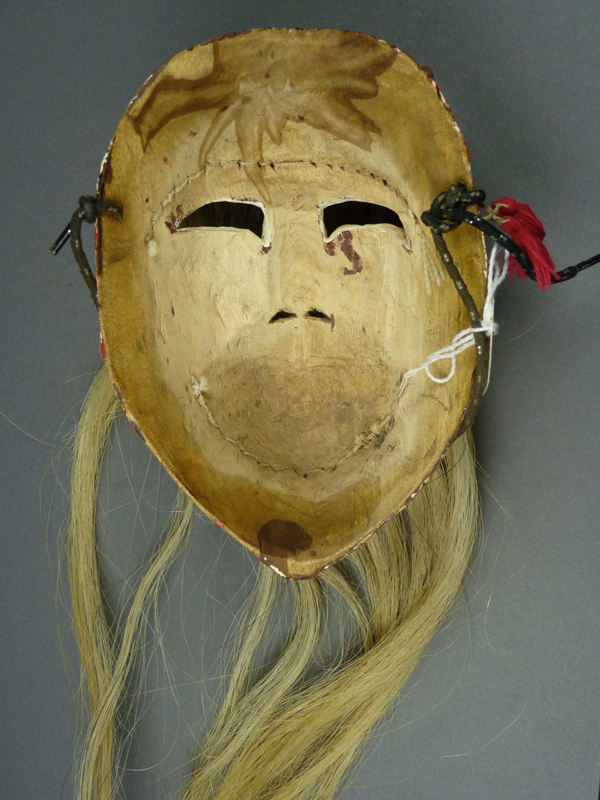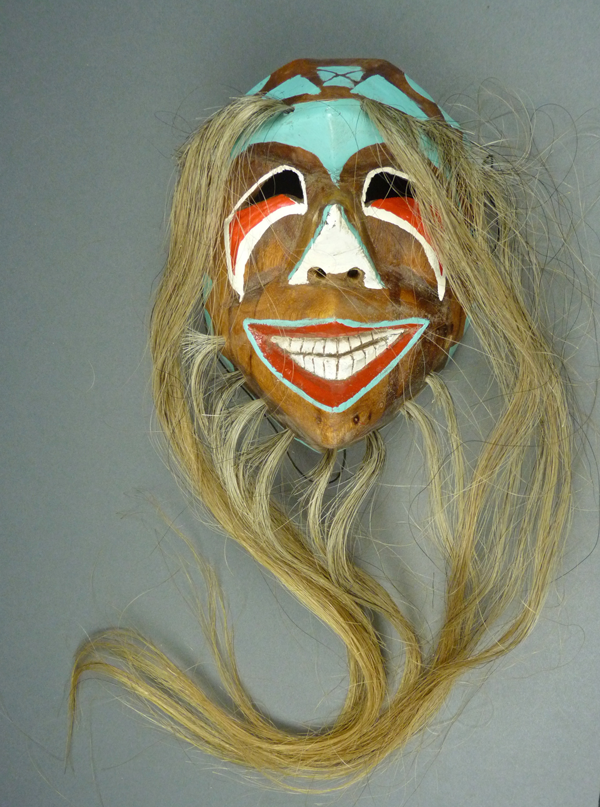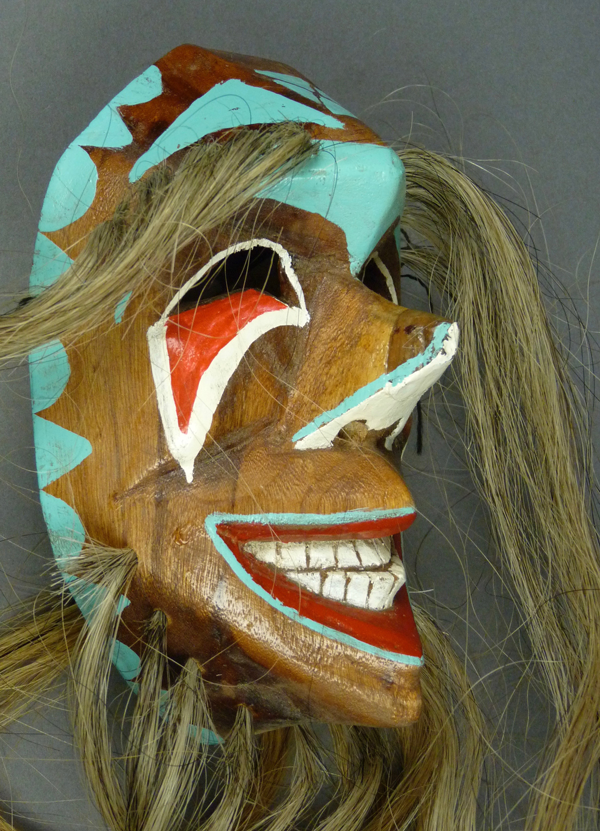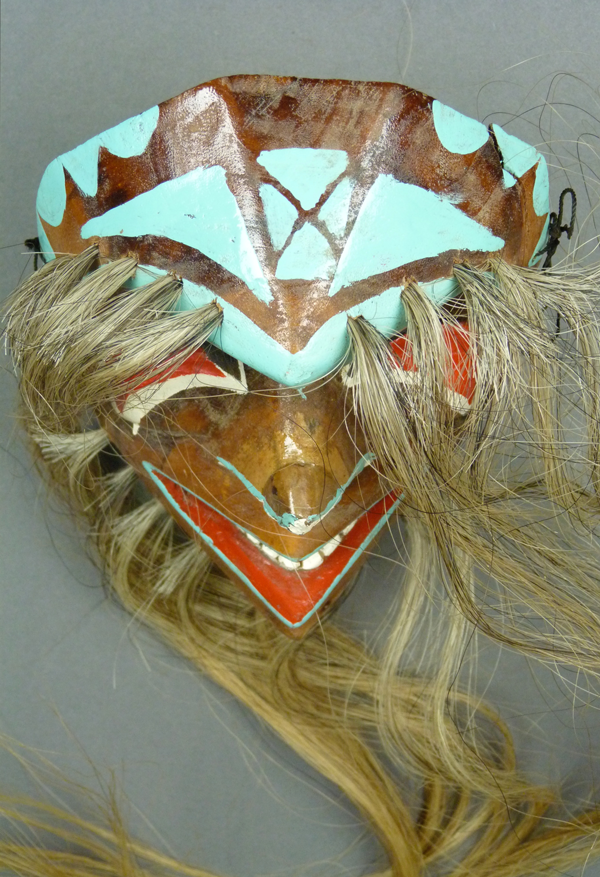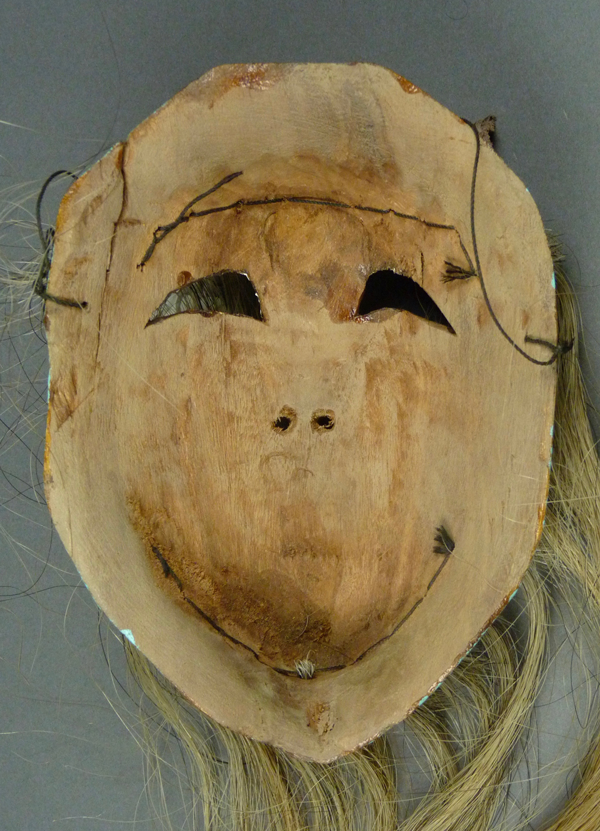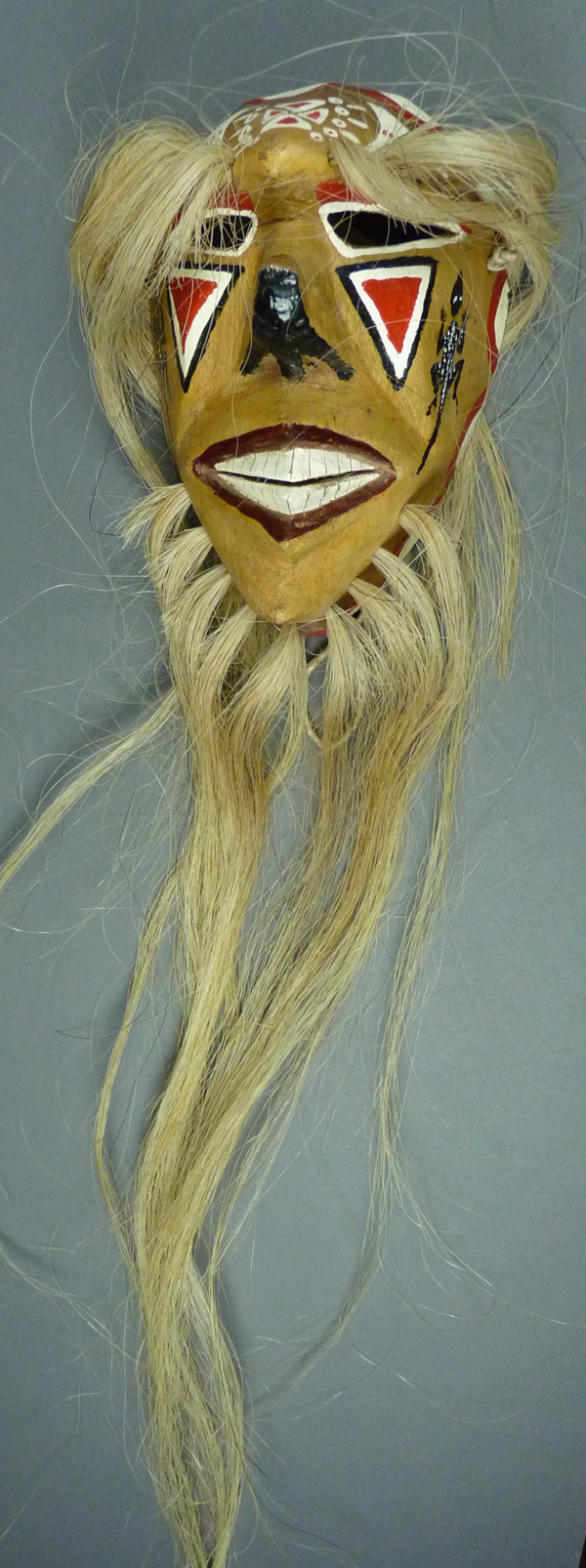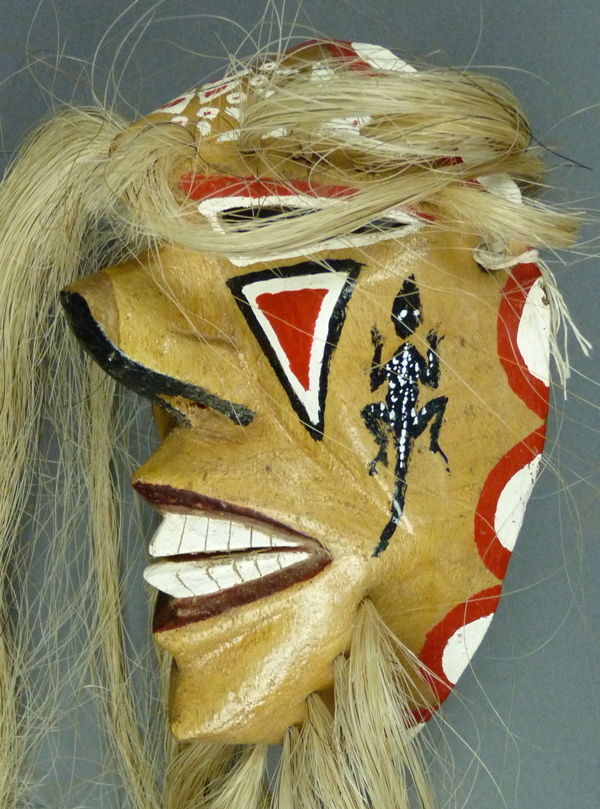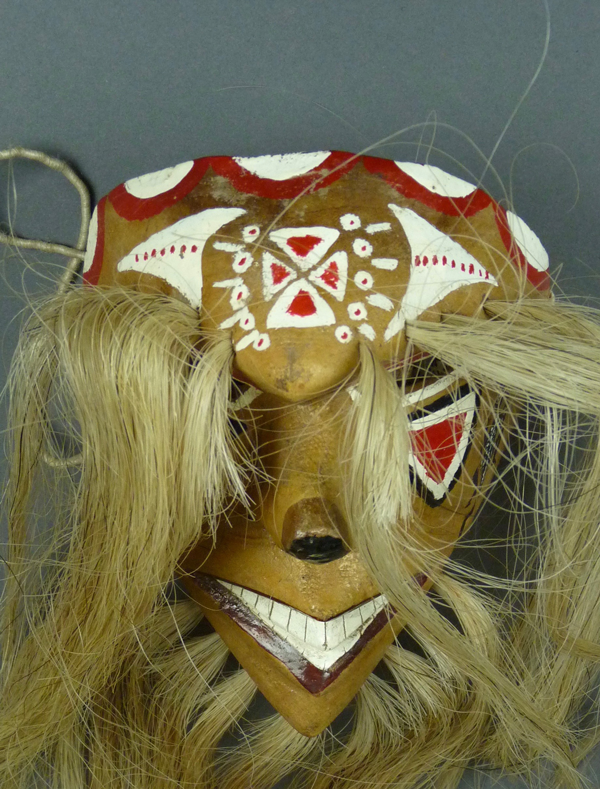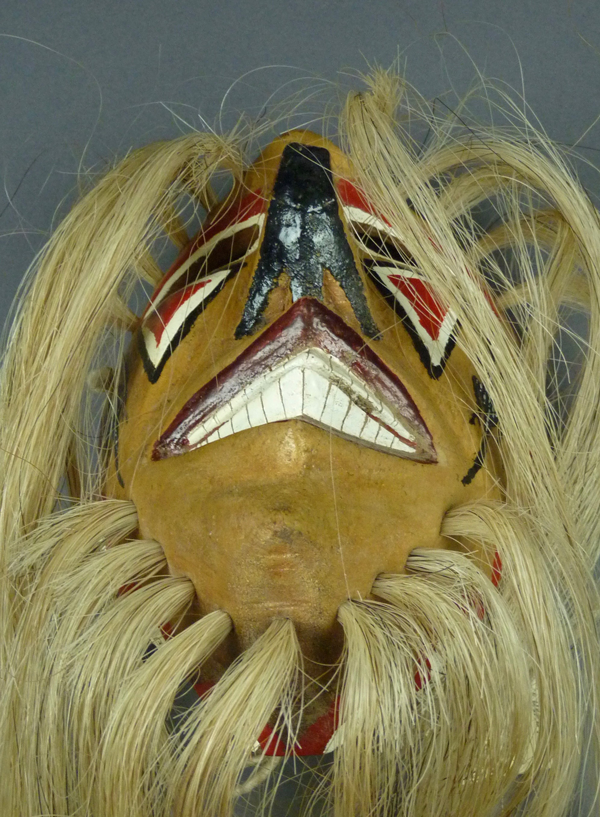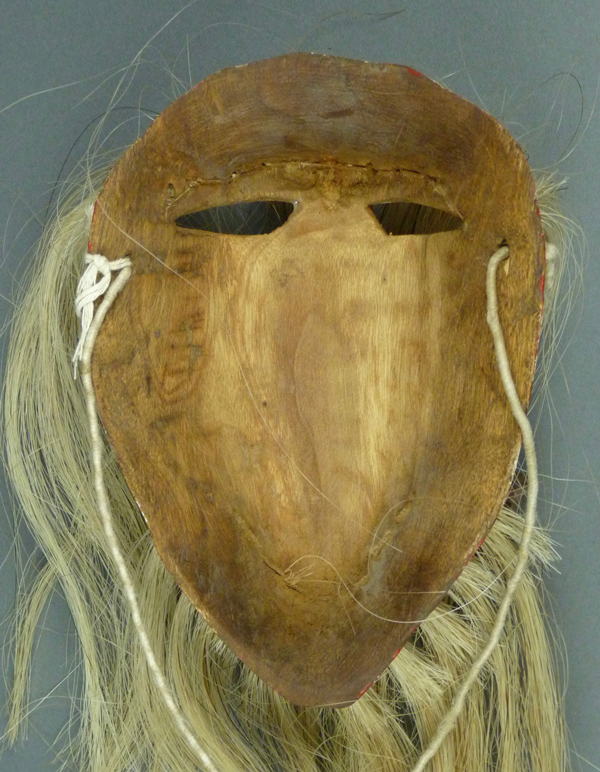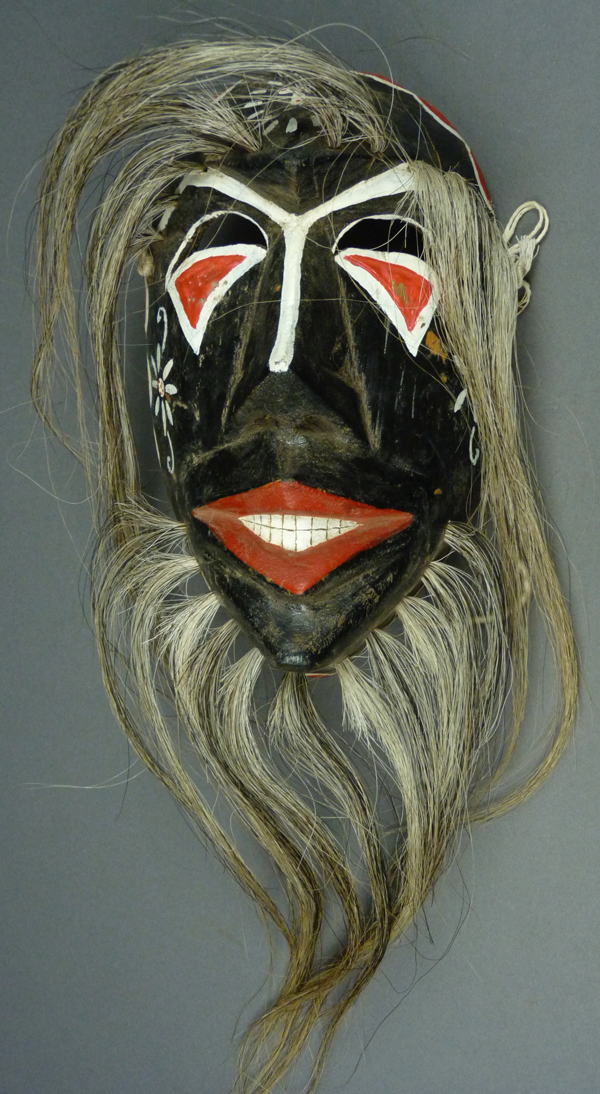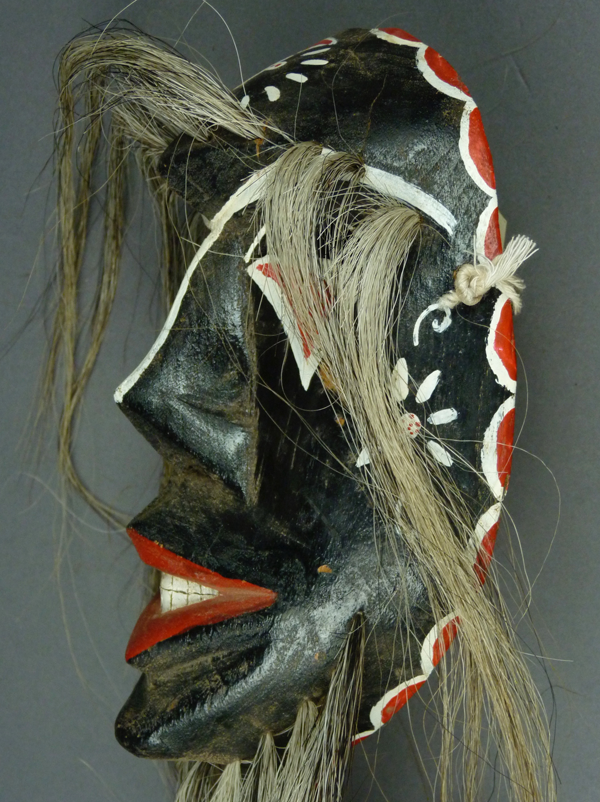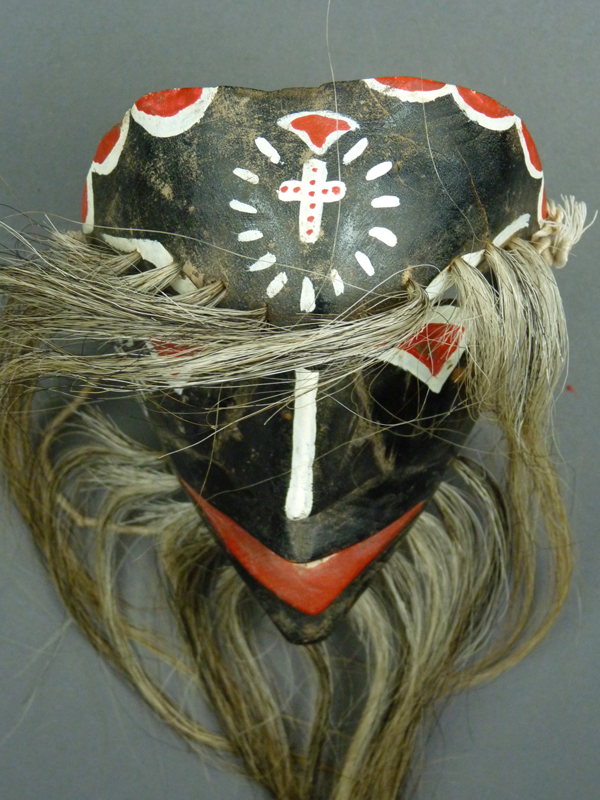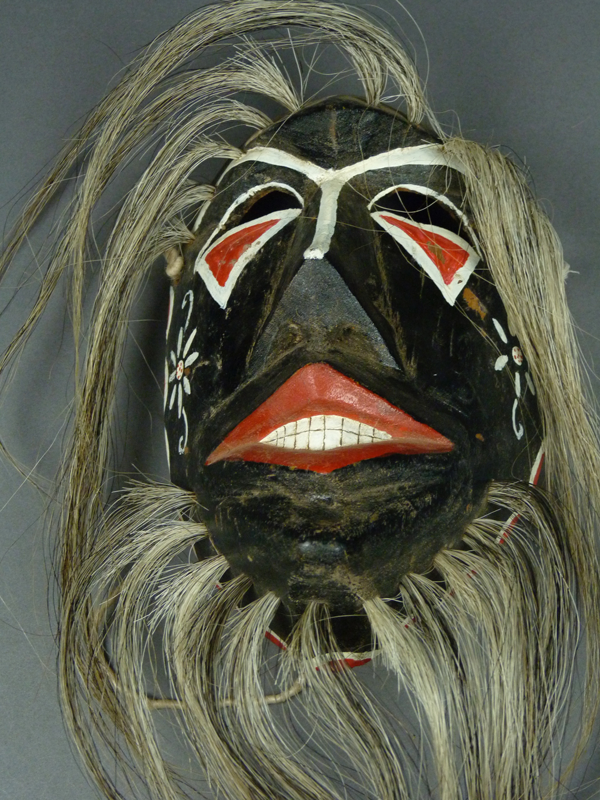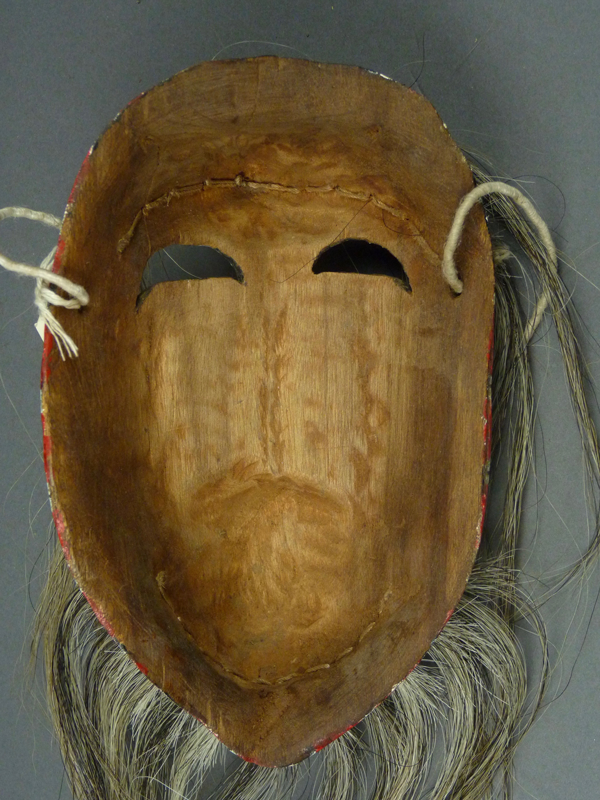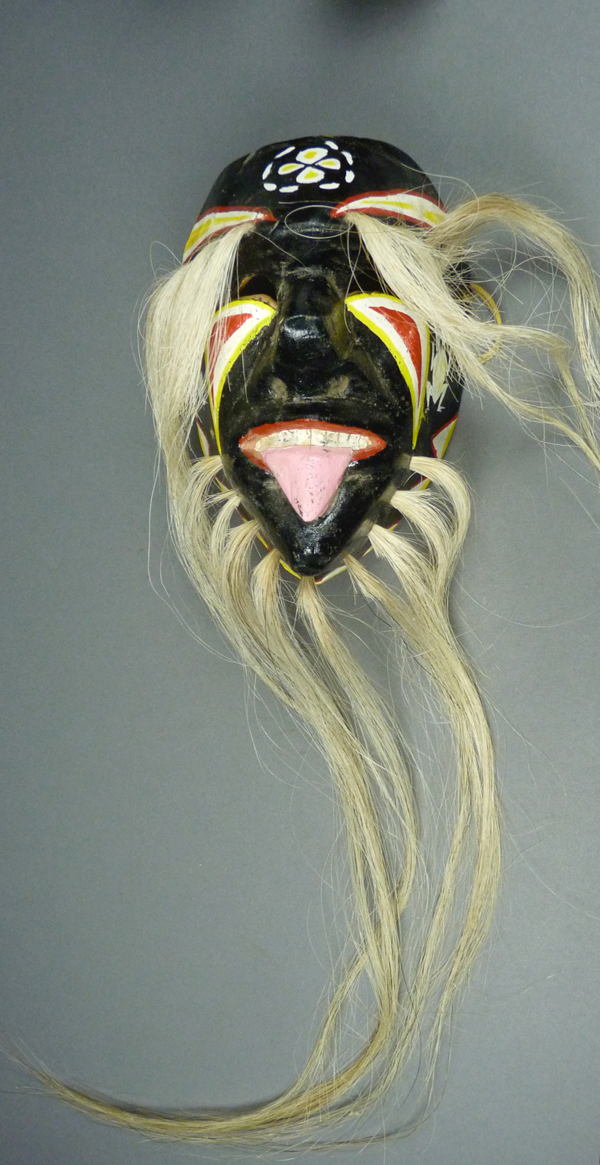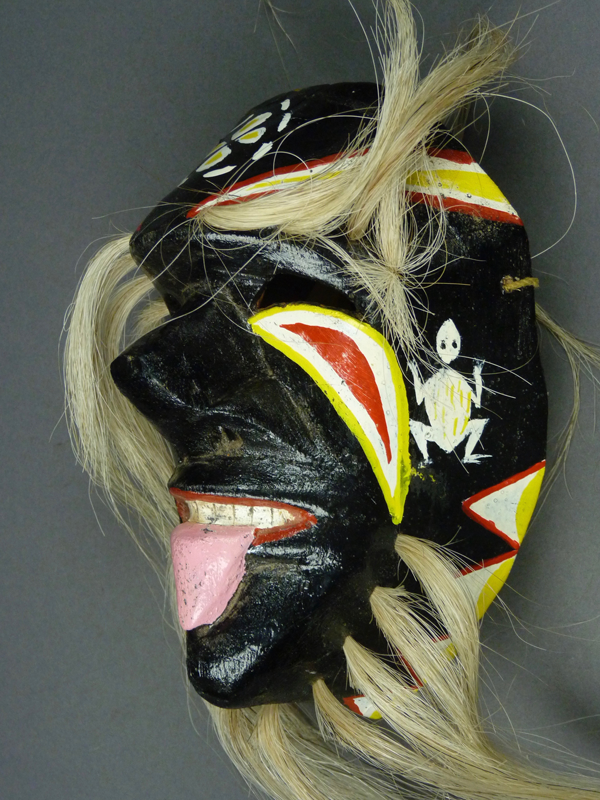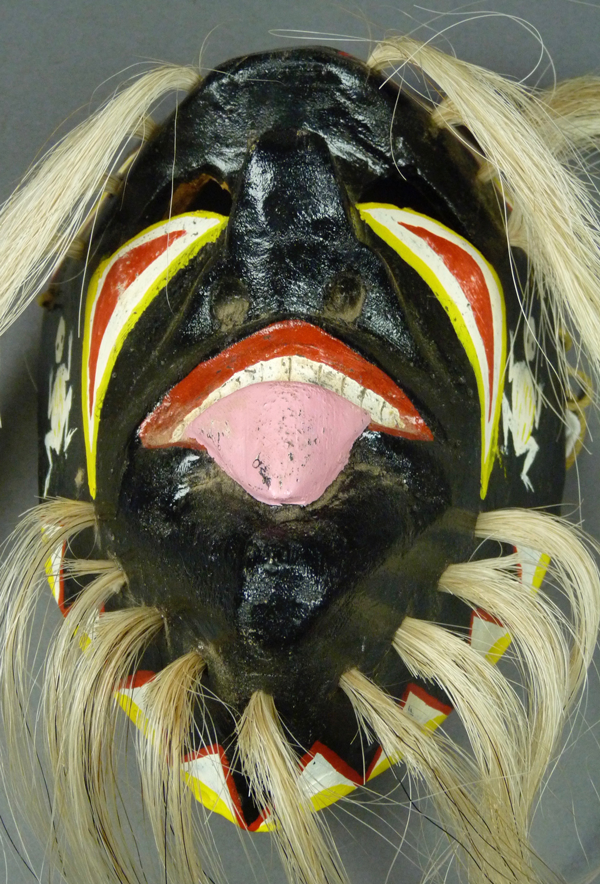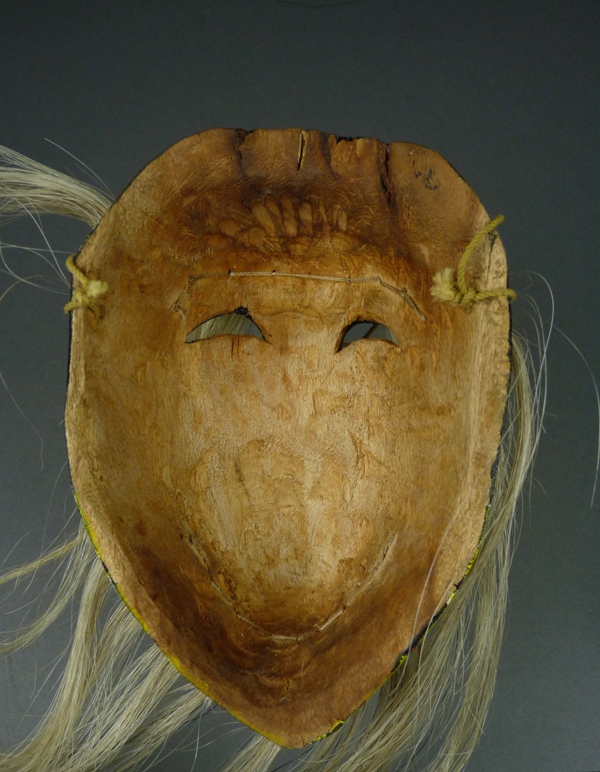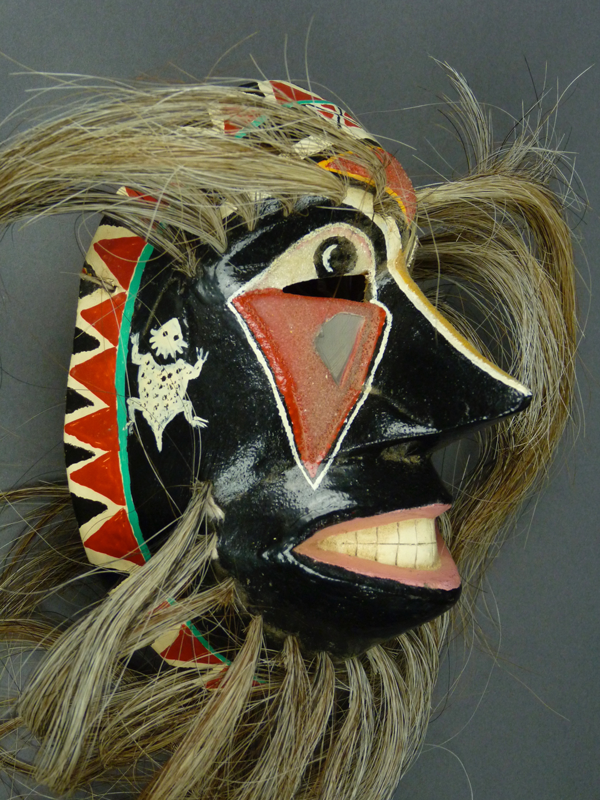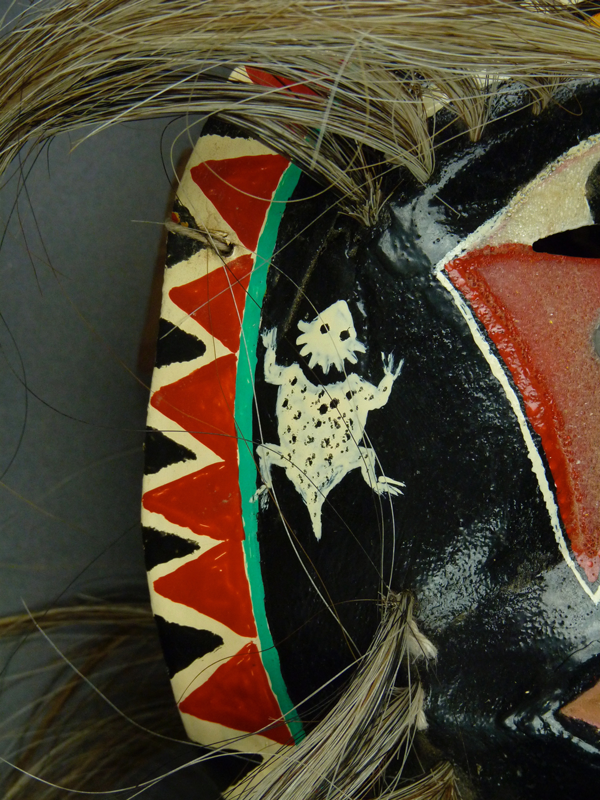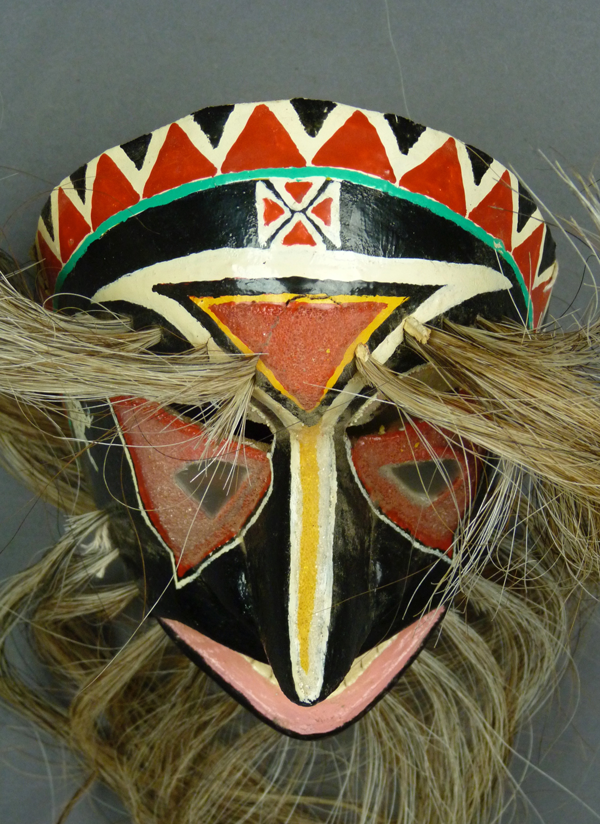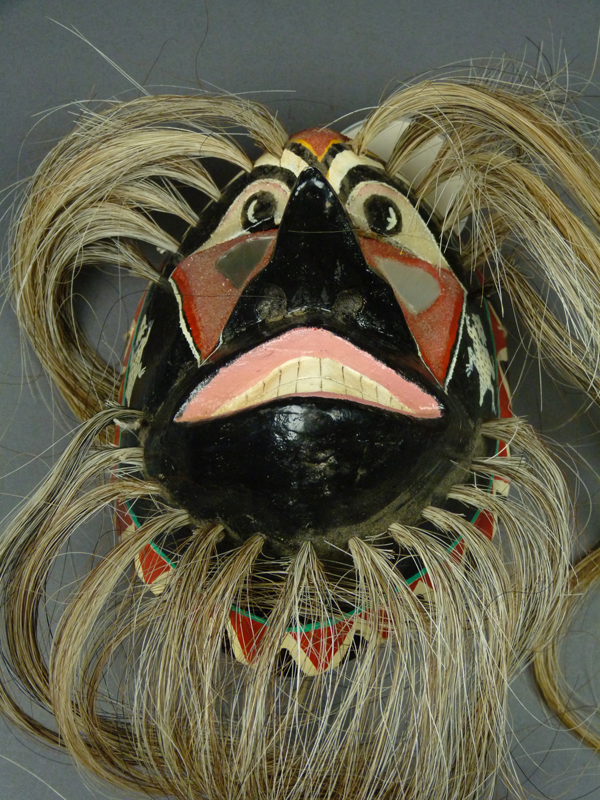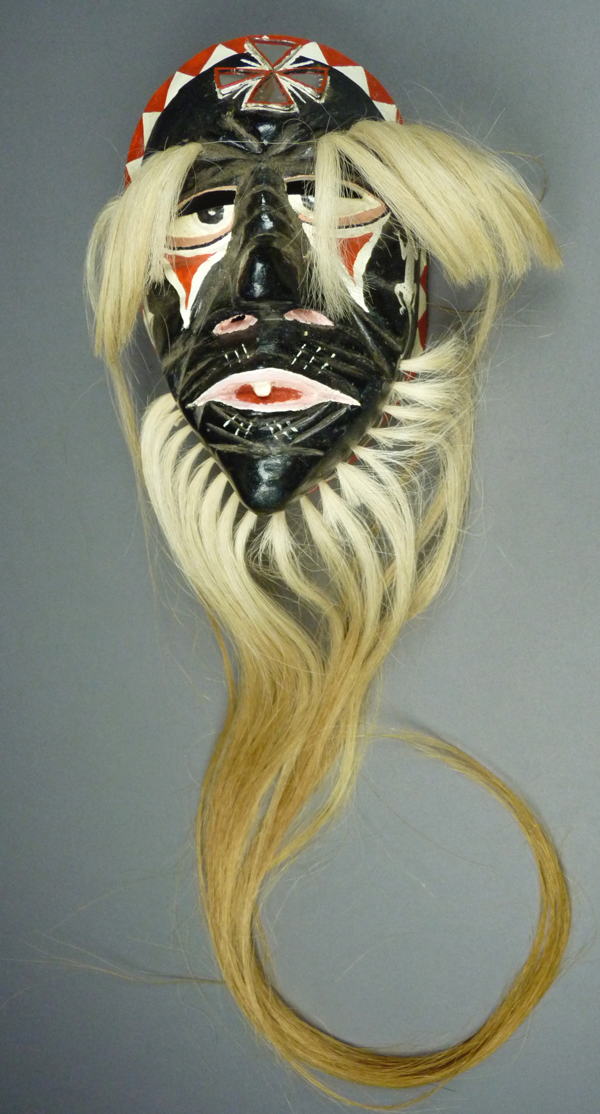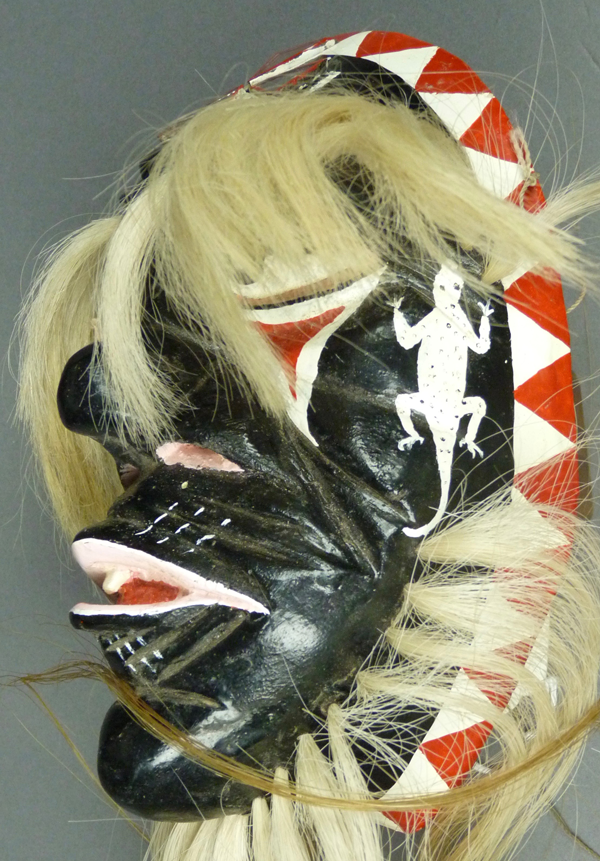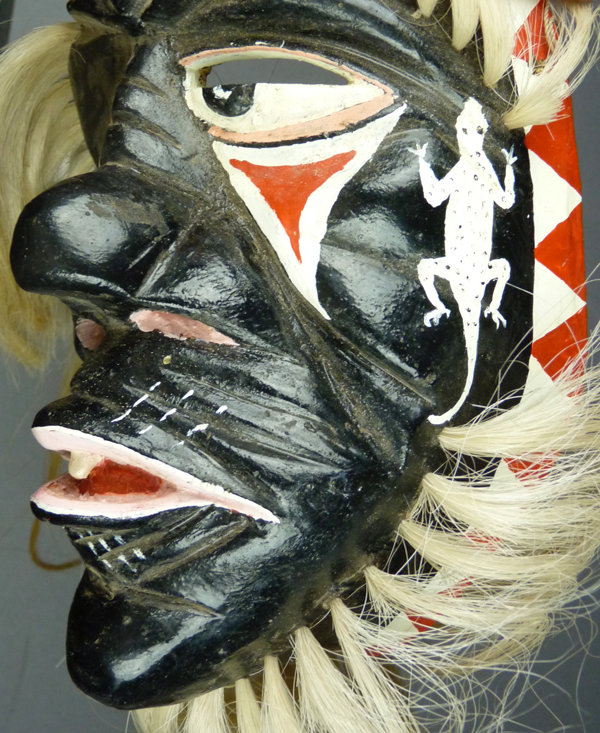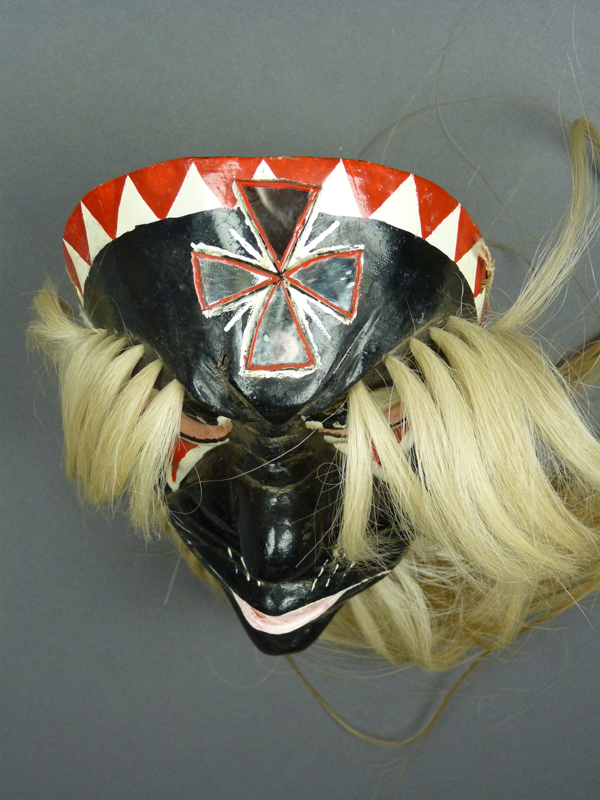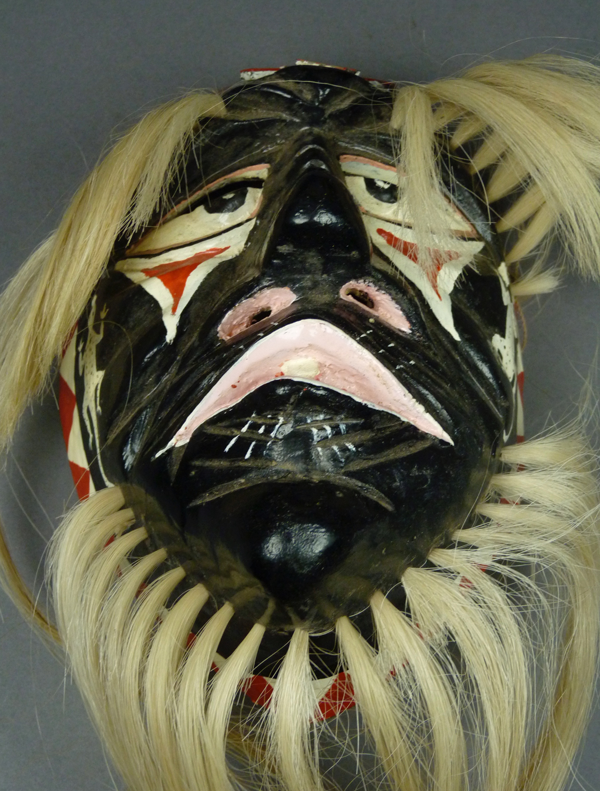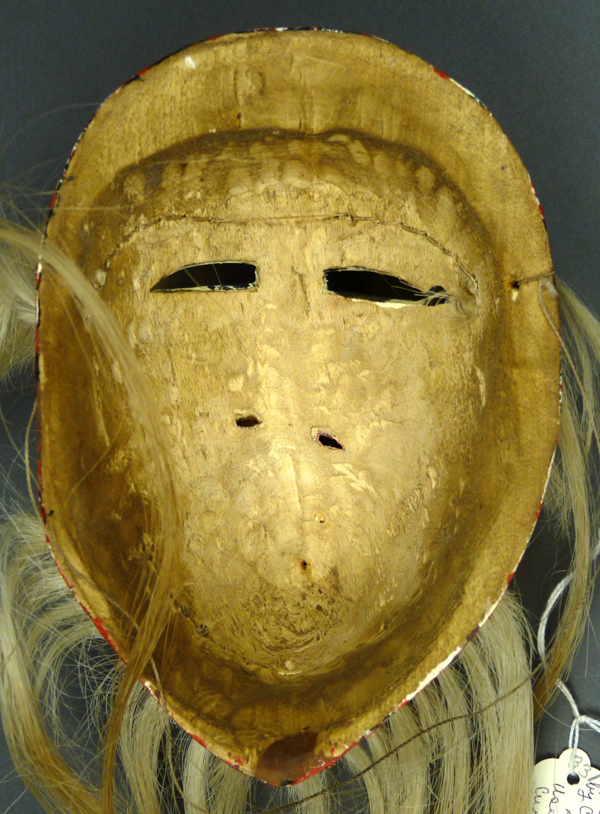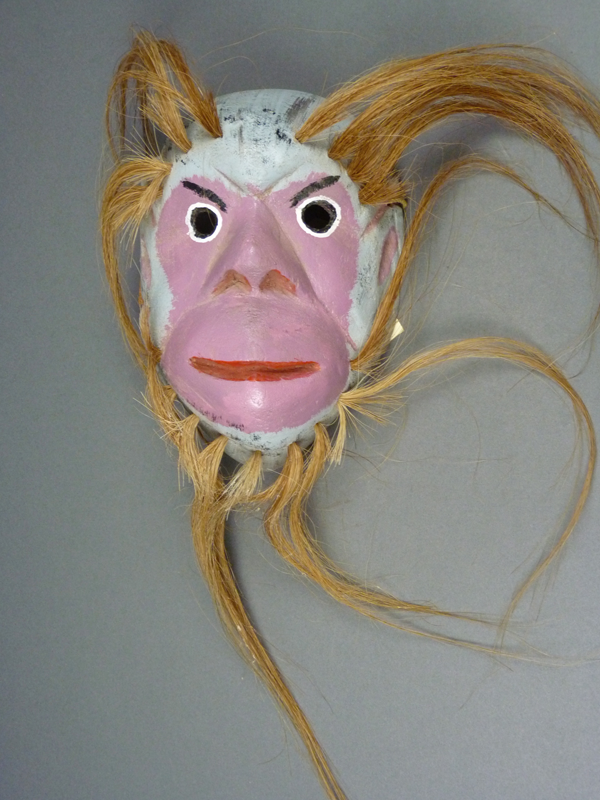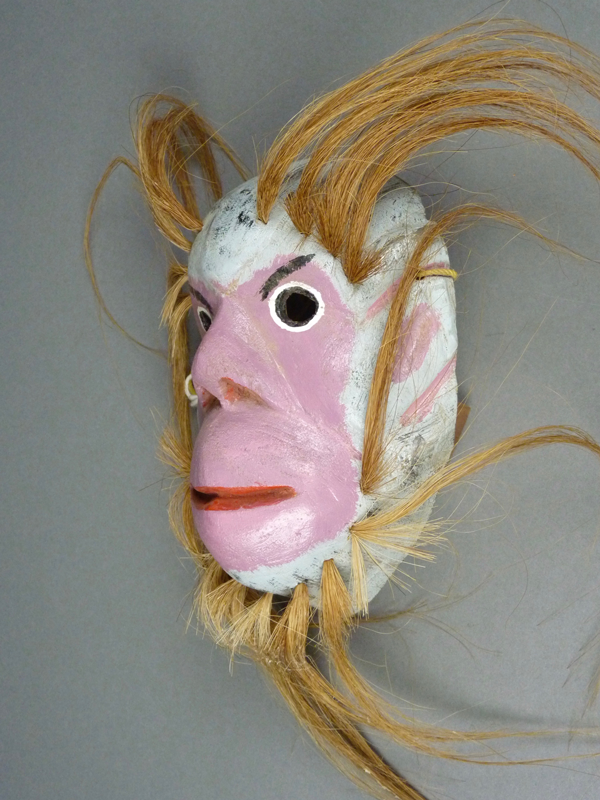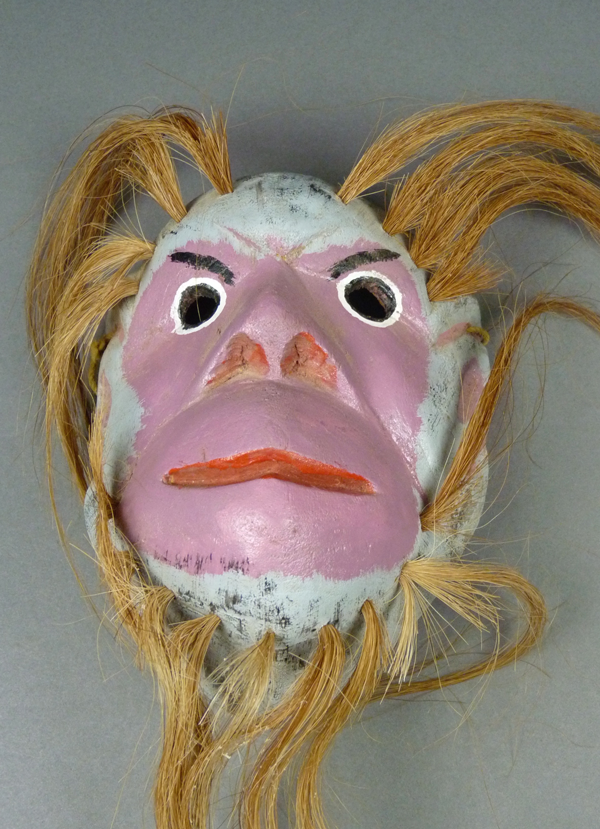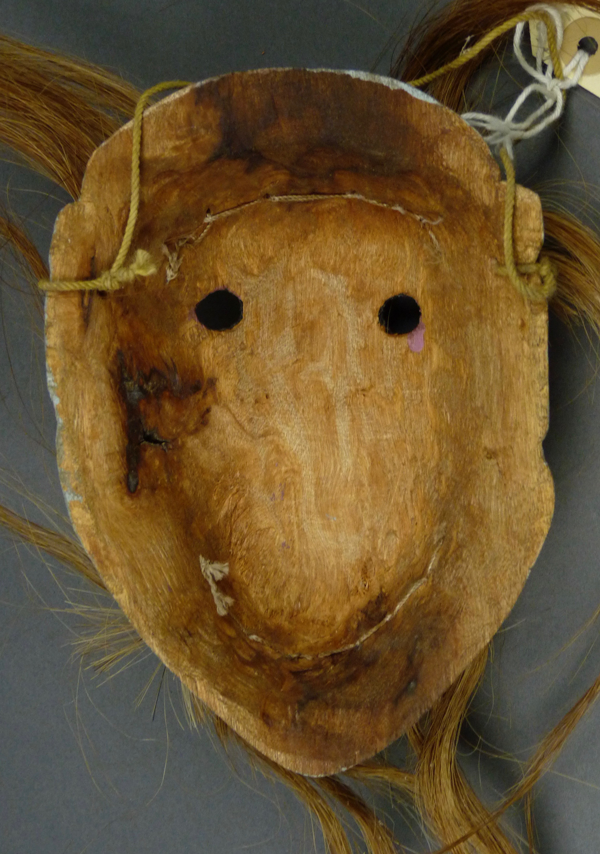In March 2016 I traveled from Pennsylvania to Tucson Arizona for ten days to photograph masks that had been collected in Northern Mexico by Barney Burns and Mahina Drees Burns. One of my purposes was to learn about carvers who were previously unknown to me. So I was pleased to encounter the masks of Cirilio Ramírez Amarillas of Potam, Sonora. Today I will share some of what I learned about this artist. You will notice that he carves most of his masks following one particular design and that these masks demonstrate a distinctive style.
The first of these masks was collected by Barney and Mahina in 2007, after it had been danced for three years. It is a handsome mask.
Inlaid triangular mirrors are used for the forehead cross, the triangles under the eyes, and on the chin.
The hair for the brows and beard is long and thick. There are lizards painted on both cheeks. The upturned nose is dramatically carved.

I believe that you can see my reflection in the lowest of the four mirrors.
There is no chin cross, but there is a mirror goatee.
The back has been very carefully carved and it is stained from use.
The second mask has the identical form, but the painting is different. The date of collection was not recorded, however it was noted to have been danced for two years. The brown areas of the face were varnished rather than painted.
There are no mirrors, and the hair bundles have less hair than the first mask. The following photo reveals that the artist had to glue wood to the block to permit him to carve a long enough nose. Such techniques are usually hidden by the paint.
The turquoise color brightens the entire mask.
The nose and mouth have the same respective shapes as those on the first mask.
The back shows definite evidence of use.
Like the last mask, this one has been varnished rather than painted. It was collected in 2006 after two years of use.
There are black lizards on the cheeks. Like the last, this mask also required a graft to permit the desired nose length.
These masks are well carved. Look at the unusual pointed forehead in the photo that follows.
The painting on these masks is freehand, and not bounded by inscribed lines.
I don’t know why the bottom of the nose was painted black, but the effect is certainly dramatic. Above the nose we see another view of the bulging forehead. What sort of being is this, with such strange features?
On the back there is obvious staining from use. Have you noticed how thinly carved are the walls of these masks? This is the work of a master.
This next mask has flowers painted on the cheeks. It was carved in 2004, danced by a Pascola for two years, and collected by Barney and Mahina in 2006.
Painted black, this design is elegant.
The forehead cross is simple in design.
The nose and mouth are design constants.
Here is another worn back.
The pink extended tongue of the next mask introduces a new level of energy. This mask was danced for two years and collected in 2007.
There are frogs painted on the cheeks.
There is a very simple flower cross on the forehead.
The triangles under the eyes have been transformed into vivid arcs of color, as if this is an “Apache” face with war paint.
There is prominent staining from use on the back..
At first glance the major change with this next mask is the broader use of color. After Cerilio carved this mask in 2002, it was danced by his brother, Catalino Ramírez Amarillas, and then later collected by Barney and Mahina.
There are also a few inlaid mirrors, and the triangles under the eyes appear to have been carved in relief. When one carves for a close relative, the quality of the effort goes up a notch. Look at the beautiful lines of the nasal ridge and the eye above.
Horned lizards are painted on the cheeks. This is an unusual image on Pascola masks, although horned lizards were apparently highly respected or admired by Yaquis in the past, and perhaps still.
Horned lizards have unusual talents, according to Doctor Wade Sherbrooke, a naturalist who has studied them for 40 years. When Mahina Drees Burns noticed that these were horned lizards on the cheeks, she promptly gave her friend Wade the mask. To learn more about horned lizards, see the links that follow. Both draw on Dr. Sherbrooke’s expertise. The first is a print article, while the second is a remarkable film, with notable horned lizard segments at 24 minutes and again at 35 minutes.
http://www.bbc.com/earth/story/20151105-if-it-has-to-a-horned-lizard-can-shoot-blood-from-its-eyes
https://www.youtube.com/watch?v=KEjt10uVfy4
Look at all these colors.
There is never any chin cross on the masks of Cirilio.
Here is another worn back.
And here is another that may have horned lizards on the cheeks, but painted more subtly. This one was carved in 2000 and collected in 2005 after being danced for five years. It has the wrinkled face of an old man.
Here is a spotted lizard that may represent another horned lizard.
A close up shot.
Like the first mask, this one has a forehead cross that is made up of triangular mirrors.
This seems a sad face.
The back is darkly stained from use.
Among all of these masks with apparently human faces, Barney Burns and Mahina Drees Burns did collect one animal mask by Cirilio, with the face of a Chango (monkey or ape). This mask was danced for one year before being collected by Barney and Mahina.
I find this mask much less interesting than Cirilio’s human masks.
There is no forehead cross and no rim design,
Someone evidently wanted dance as an ape, and Cirilio accommodated their desire.
There s heavy staining from use.
I hope that you have enjoyed learning about the masks of Cirilio Ramírez Amarillos. Next week I will feature Pascola masks by Soterito Matus.

